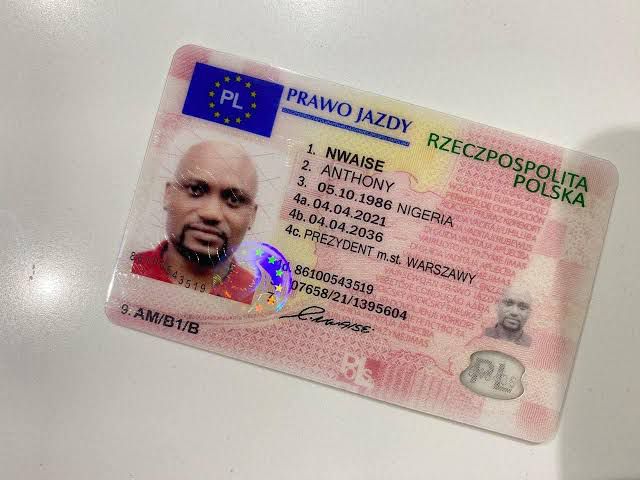A An Overview Of Driving Licenses B From Start To Finish
Understanding Driving Licenses: Types, Requirements, and Frequently Asked Questions
Driving is an essential element of contemporary life, and getting a driving license is an important turning point for numerous individuals. This article explores the different kinds of driving licenses available, the requirements to get them, and responses commonly asked questions related to the topic. kupować prawo jazdy z dostawą -informed perspective on driving licenses can help individuals comprehend the value of selecting the right type of license to fulfill their requirements.
Kinds Of Driving Licenses
Driving licenses can vary in between nations and areas, however they normally fall under a number of significant categories. The following table summarizes the most typical kinds of driving licenses, including their purposes and common limitations.
Type of License
Description
Typical Restrictions
Eligibility Age
Student's Permit
Permits newbie motorists to practice.
Must drive with a licensed grownup.
16-18 years of ages
Class C License
Requirement license for guest automobiles.
No restriction on variety of travelers.
18 years or older
Class A License
Industrial license for large automobiles.
Should stick to more stringent regulations.
21 years or older
Class B License
For driving buses and larger vehicles.
May need special recommendations.
21 years or older
Motorbike License
For running motorbikes.
Need to use a helmet; varies by state.
16-18 years of ages
International License
Allows legal driving in foreign nations.
Should possess a valid domestic license.
18 years or older
Student's Permit
The learner's authorization is the primary step for numerous people venturing into the world of driving. This permit enables newbie motorists to practice driving under supervised conditions, normally needing a licensed adult over a particular age to accompany them in the automobile.
Class C License
The Class C license is the most typically held driving license, enabling individuals to run standard guest vehicles. This license usually has actually fewer limitations compared to other categories.
Class A and B Licenses
Class A and B licenses are essential for operating industrial automobiles. These licenses require special training and testing, making sure that drivers are equipped with the abilities required for steering larger and more complex vehicles safely.
Motorcycle License
Individuals thinking about riding bikes should get a motorcycle license, which can require additional training and screening. Safety equipment, such as helmets, is often mandated by law.
International License
An international driving license enables people to drive in foreign countries, however it is important to have a valid domestic driving license in combination with the international authorization.
Requirements to Obtain a Driving License
The requirements for acquiring a driving license can differ considerably by jurisdiction. Nevertheless, there prevail steps and criteria that most candidates will come across. Below is a list of basic requirements:
Age Requirement:
- Minimum age varies; student's permits are typically issued at 16, while full licenses may need candidates to be 18 or older.
Vision Test:
- Most jurisdictions require candidates to pass a vision test to ensure safe driving abilities.
Written Test:
- New drivers must pass a composed exam that covers traffic laws, road indications, and safe driving practices.
Driving Test:
- Practical driving tests are conducted to demonstrate a candidate's capability to run an automobile safely under different conditions.
Charges:
- Payment of application and screening costs is typically needed.
Proof of Identity:
- Applicants should offer legitimate recognition, such as a passport or birth certificate, in addition to evidence of residency.
Adult Consent (for minors):
- Parental or guardian authorization is typically needed for applicants under the age of 18.
Comprehending the different types of driving licenses and their associated requirements is important for anybody aiming to drive lawfully and safely. Each license serves an unique purpose, dealing with numerous driving needs, from basic cars to business transport and bikes. By satisfying the required requirements and sticking to regulations, striving drivers can enjoy the flexibility of driving while ensuring their safety and the security of others.
Often Asked Questions (FAQs)
What do I require to bring when requesting a driving license?
- You normally need to offer identification, proof of residency, and any essential application charges. Consult your local DMV or licensing authority for specific requirements.
The length of time does it require to acquire a driving license?
- The timeline can differ based upon specific scenarios, such as how rapidly one can finish the needed tests, and whether there is a stockpile at the licensing authority.
Can I drive with a student's license?
- Yes, however you should be accompanied by a certified chauffeur and comply with limitations set by your regional laws.
What takes place if I stop working the driving test?
- You usually have the option to retake the test after a designated waiting duration, which varies by jurisdiction.
Is it needed to take a driving course?
- While not always compulsory, taking a chauffeur's education course can be helpful and is typically needed for people looking for a learner's permit.
By being informed about the kinds of licenses available, the requirements necessary for obtaining one, and the associated guidelines, prospective motorists can navigate the procedure of acquiring a driving license with confidence.
